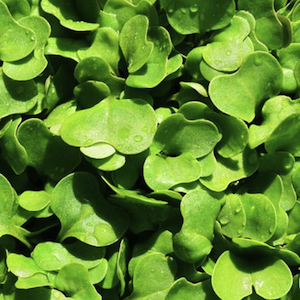Assessment of yield and nitrate content of wild rocket grown under salinity and subjected to biostimulant application

HTML: 23
All claims expressed in this article are solely those of the authors and do not necessarily represent those of their affiliated organizations, or those of the publisher, the editors and the reviewers. Any product that may be evaluated in this article or claim that may be made by its manufacturer is not guaranteed or endorsed by the publisher.
Soil secondary salinity due to irrigation is a condition that frequently occurs in Mediterranean areas, and negatively affects crop growth and yield. Biostimulants are proven to alleviate the detrimental effect of salinity on plant growth and production. Four increasing saline concentration levels of water irrigation reaching 6.0 dS m-1 (Electrical Conductivity - EC) were combined with foliar biostimulant treatments (tropical plants and a protein hydrolysate) in pots containing wild rocket. The combined effect of experimental factors improved the SPAD index with greater increases in the EC4 and EC6 plants (+9 and +12% compared to untreated, respectively) but also caused an increase in nitrate content (+48%, on average, compared to the untreated control) without exceeding the EC legal threshold. Overall, for the other parameters analyzed, the response of wild rocket both to application of both salinity and biostimulant was consistent with previous studies. Our results show that biostimulant effectiveness in alleviating the detrimental effect of salinity was not evident for all parameters analyzed. In addition, harvest time affected most parameters, showing the important role of growing conditions in modulating plant response to salinity stress when biostimulants are applied. Plant response thus seems to depend on biostimulant application (type, dose, timing), growing conditions, and genetic traits.
How to Cite

This work is licensed under a Creative Commons Attribution-NonCommercial 4.0 International License.
PAGEPress has chosen to apply the Creative Commons Attribution NonCommercial 4.0 International License (CC BY-NC 4.0) to all manuscripts to be published.

 https://doi.org/10.4081/ija.2023.2187
https://doi.org/10.4081/ija.2023.2187







